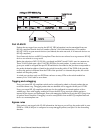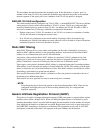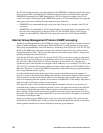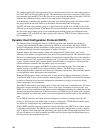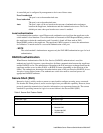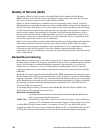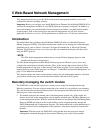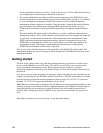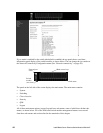
Intel® Blade Server Ethernet Switch Module IXM5414E 37
Secure Socket Layer (SSL)
Managing devices with a web browser has been standard practice for several years. Unfortunately
standard HTTP transactions are no more secure than Telnet. The solution is the use of the Secure
Sockets Layer (SSL) protocol which provides a means of abstracting an encrypted connection
between two stations. Once established, such a connection is virtually no different to use than an
unsecured connection. This allows an established protocol (e.g. HTTP) to operate in a secure
manner on an open network.
Hash Algorithms • MD5
• SHA-1
• SHA-1-96
Key Exchange Methods Diffie-Hellman
Compression Algorithms • zlib
• none (i.e. no compression)
Public Key Algorithms • SSH-DSA
• SSH-RSA
SSH Protocol Versions • SSH 2.0
• SSH 1.5
Table 3. Secure Sockets Layer Details
SSL Feature Component Type
Protocols Secured HTTP
Ciphers • RC4
• DES
• 3DES
Hash Algorithms • MD5
• SHA-1
Key Exchange Methods • Diffie-Hellman
• RSA
SSL Protocol Versions • TLS 1.0
• SSL 3.0
Table 2. Secure Shell Feature Details
SSH Feature Component Type



